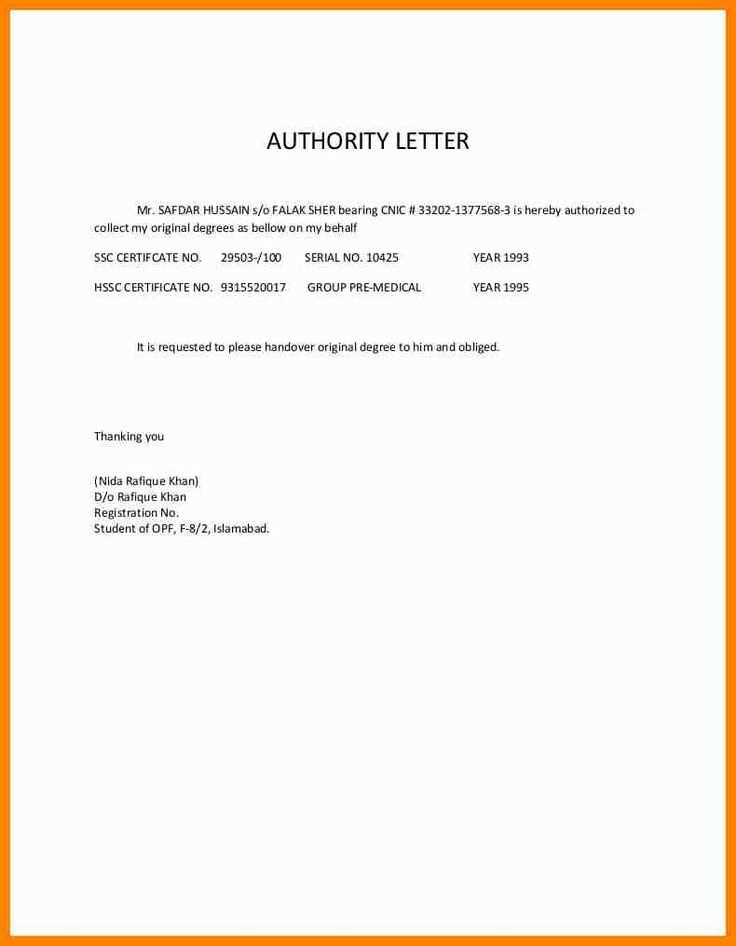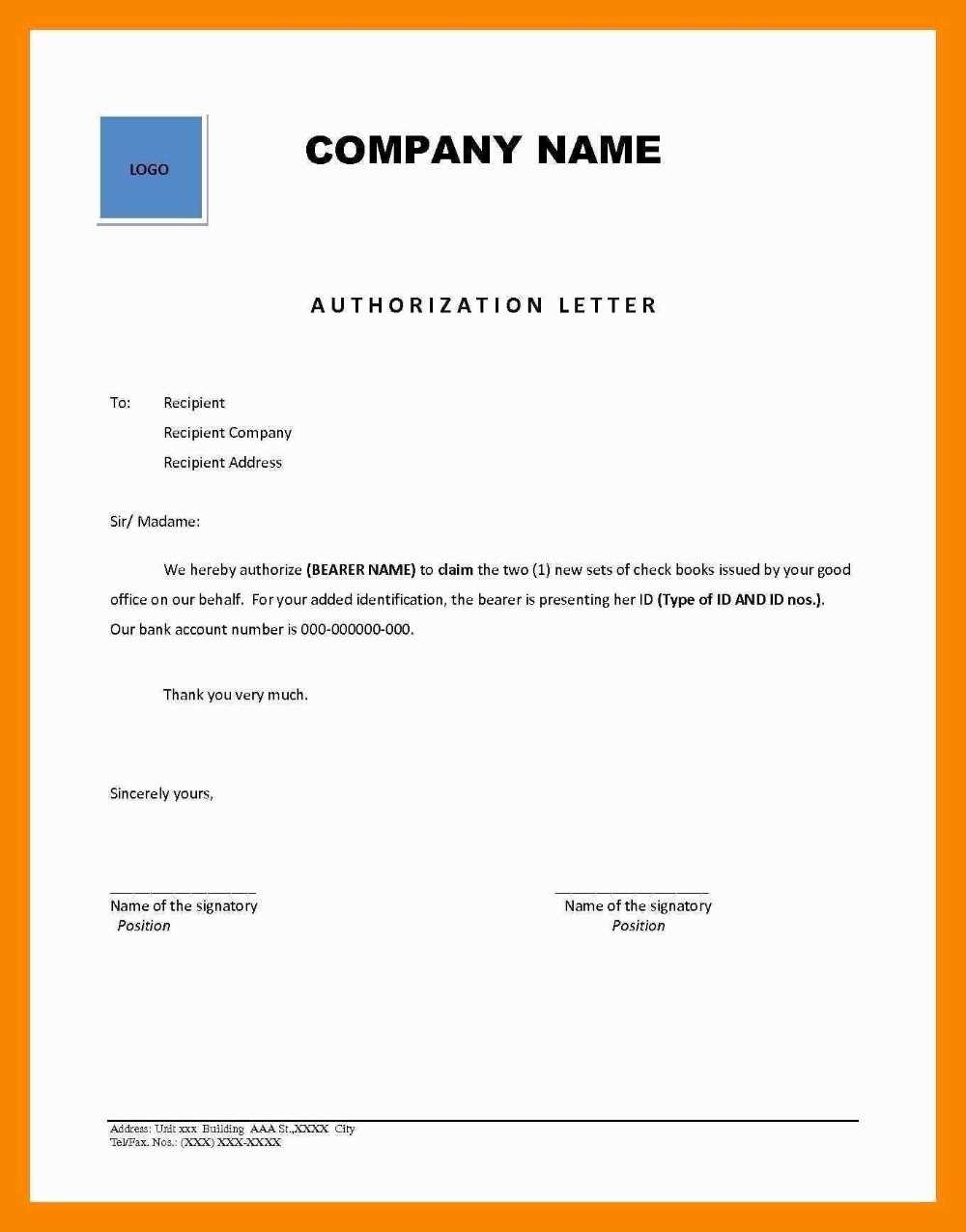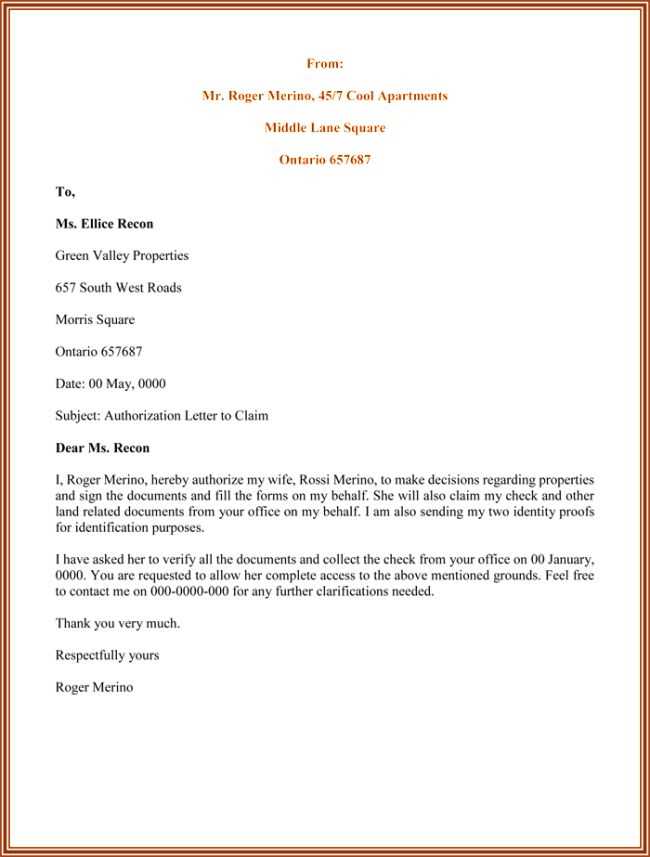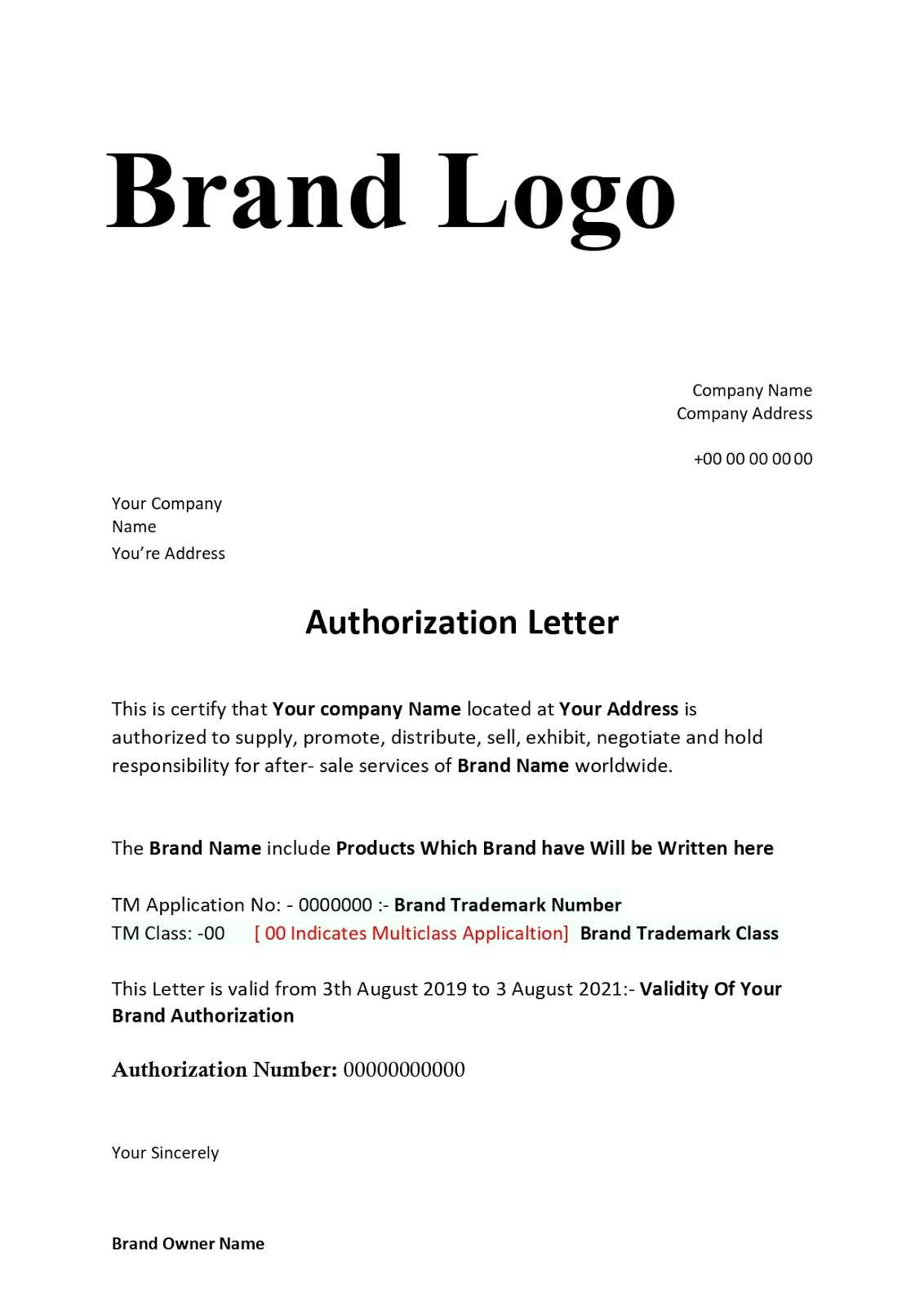Letter of Authority Template for Effective Task Management

Overview of the Document

This document serves as a formal written statement that grants someone the permission to act on behalf of another person or entity. It is commonly used in business, legal, and personal contexts to designate individuals who can make decisions or perform specific actions in the absence of the original party. This written permission is essential for ensuring the legitimacy of actions carried out by the appointed person.
Key Elements to Include
When creating such a statement, it is important to outline certain critical details to make it valid and clear. Below are the key components:
- Full Names and Details: Both the authorizing individual and the appointed person must be clearly identified, including their full names, addresses, and contact information.
- Scope of Permission: The specific tasks or responsibilities granted to the representative should be detailed to avoid misunderstandings.
- Duration of Authorization: The time period during which the appointed person is authorized to act should be clearly stated, whether it is indefinite or for a set period.
- Signatures: Both parties must sign the document to confirm their agreement and understanding of the terms.
Step-by-Step Creation

Here is a simple guide to drafting such a document:
- Start with a Formal Statement: Begin with a clear declaration of who is granting the authorization and to whom.
- Outline the Powers: Define the exact nature of the powers being transferred to the authorized person.
- Specify Validity: Mention the time frame during which the authorization will be in effect, including any expiration dates.
- Finalize with Signatures: Ensure that both parties sign the document, ideally in the presence of witnesses if required.
Important Considerations
Before granting such permissions, consider the implications of the authorization. Ensure that the person being authorized is trustworthy and capable of handling the responsibilities outlined. Also, make sure to include provisions for revocation or termination in case circumstances change.
This section addresses the importance of ensuring clarity and precision in any document that delegates power or responsibility. Such an agreement must clearly specify the roles, permissions, and limitations of the designated individual to avoid misunderstandings and disputes. Without proper structure, the intent of the document may be compromised, leading to complications in its execution.
Clarity in Terms

The wording in the agreement should be direct and unambiguous. It is essential to specify the exact tasks the individual is authorized to perform and any boundaries they should not cross. Clearly defining these aspects will prevent any confusion regarding the extent of the granted powers.
Document Integrity
Ensuring the document is legally sound is crucial. Both parties should review the content carefully to ensure that it is in alignment with the law. Additionally, if there are specific rules or regulations that govern such documents, they should be referenced to ensure compliance and validity.